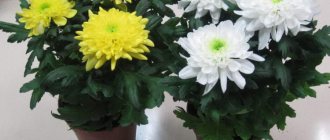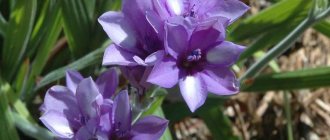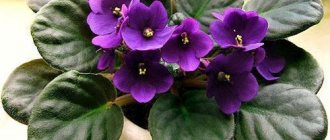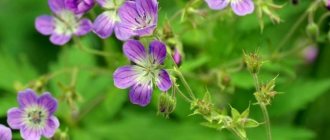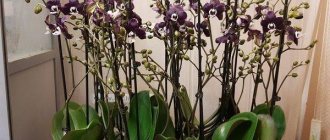- Origin and appearance
- Classification
- According to the height of the bushes
- According to the shape of the inflorescence
- By color
- Planting
- Reproduction
- Care
Many gardeners like small-flowered chrysanthemum because of its unpretentiousness, which allows it to be planted in almost any area. Even a beginner in gardening can handle caring for such plants thanks to simple agricultural techniques. These flowers live for many years, almost without experiencing the effects of external unfavorable factors. They are famous for their variety of colors; many gardeners really like white chrysanthemums with various shades.
Is it possible to plant chrysanthemums in the fall?
Most experts in this field believe that autumn planting of perennial chrysanthemums should be carried out only in warm regions, giving preference to small-flowered varieties.
In addition, this is the most common time when planting material is sold at markets. Flower growers have the opportunity to evaluate the bush, its height, size and color of the inflorescences. It is better to buy early flowering chrysanthemums no later than September, and the plant should bloom profusely.
As a rule, flowering seedlings are sold by people who grow cut flowers, and sellers often grow late-flowering varieties in their greenhouses to prolong flowering. Next autumn, the chrysanthemum does not have time to bloom in our gardens; due to frost, all the long-awaited beauty disappears.
A worthy option is to purchase a flowering bush in a pot in the fall, wait for the end of flowering, break off the dry stems and leave it in a dry, cold basement for the winter at a temperature of 4-5 degrees Celsius. In spring, plant chrysanthemums in open ground. Conditions for proper winter storage are described below.
Some tips for planting chrysanthemums in the fall:
- The optimal time for planting is considered to be the end of September - the first half of October;
- You should not plant flowering bushes - there is a high risk that they will not take root;
- For planting, it is better to choose bushes on which basal shoots have formed.
- Before frost, planted chrysanthemums must have time to get stronger in order to withstand winter frosts well.
- Don’t forget to mulch the soil with a layer of peat or compost, and before frosts in November, it’s better to cover it with something to protect it from the cold.
Seed method
Growing perennial chrysanthemums from seeds is practiced by those who are experimenting with choices, who need a large number of plants, several varieties, or a specific one. Most often it is used for breeding small-flowered Korean chrysanthemums and annual varieties. Perennials are grown through seedlings, annuals - by seedlings and without seedlings.
Seeds of garden varieties can be purchased at the store or collected yourself. Hybrid varieties are not suitable for collecting planting material because they lose varietal characteristics. If this fact is not important, then hybrids will do. The seeds of small-flowered chrysanthemums have good germination, while those of large-flowered chrysanthemums have worse germination.
The timing of sowing seeds for seedlings depends on the climate of the area. In the southern regions, sowing is carried out in the second ten days of February, in the Urals, north of Central Russia, in Siberia - in the first ten days of March, in Moscow and the Volga region - in the third ten days of February.
Related article:
Planting chrysanthemums in the garden
Preparing seeds and soil
The collected seeds need to be prepared for sowing. First, they are immersed in warm water for 5 minutes, and those that float are removed - these are empty and low-quality seeds. The remaining ones, wrapped in gauze or cloth, are disinfected - kept for 15-20 minutes in a weak solution of chlorhexidine, potassium permanganate or Fitosporin (diluted according to instructions). After this, dry well.
The soil for seedlings must be loose, moisture- and breathable - in heavy and dense seeds, they take a long time to germinate, and the seedlings grow weak. Purchased soil for flower seedlings or a self-prepared soil mixture, which includes humus, peat and garden soil in equal parts, is suitable. The soil mixture is disinfected with a pink solution of manganese and boiling water. When it dries a little, pour it with Fitosporin solution.
How to sow
You can grow seedlings in low boxes, wide containers with drainage holes, in individual cups (volume 500 ml) in which holes are made for moisture drainage, in peat tablets. A previously used container is first washed with soap, scalded with boiling water or rinsed with a manganese solution.
Planting stages:
- a layer (1 cm) of drainage made of expanded clay, crushed stone, coarse sand is placed on the bottom, soil is poured, filling 2/3 of the volume, moistened;
- sand (3-4 mm) is poured on top and sprayed from a spray bottle;
- spread the seeds evenly, keeping 2.5-3 cm between them, press lightly with the palm of your hand (do not cover them with soil), moisten;
- The container is covered with film and kept in a room where the temperature is 21-25 °C.
Related article:
Beautiful, unpretentious, long-flowering: TOP 7 chrysanthemums for the autumn garden
2-3 seeds are planted in peat tablets (they are first dipped in water for half an hour to swell) and cups. Weak seedlings are then removed, leaving the strongest ones to grow.
Rules for caring for seedlings
The container is kept warm until germination, ventilated for 20-25 minutes, condensation on the film is removed, and watered with a spray bottle. If everything is done correctly, seedlings will appear after 10-14 days.
The film is then removed, and the seedlings are transferred to a cool (15-18 ° C) bright place where there is no direct sunlight. If there is not enough light, then install backlighting. For irrigation, use settled water at room temperature.
Picking, aftercare
Picking into separate containers (it is best to use plastic glasses with a volume of 500 ml) begins as soon as real leaves are formed on the seedlings - 1-2 pairs. The same soil mixture will do. Water the seedlings in advance so that the lump of earth does not crumble. For picking, strong and healthy plants are chosen, weak and frail ones are discarded.
Related article:
Let's say Thank you to Chrysanthemum! How to prepare it for winter so that it doesn’t disappear and blooms luxuriously next year
First, drainage is poured into the cup, a little soil on top, then the seedling is planted. Fill it up to the first cotyledon leaf and water it. After some time, the soil, if it has settled, is added.
How to care:
- the cups are placed in a bright, cool place, where there is no direct sunlight or there is the possibility of shading;
- to speed up adaptation, seedlings are sprayed with a growth stimulator (Zircon, Epin Extra);
- water after the top layer of soil dries;
- on rainy days they provide additional lighting;
- a week later, feed with potassium humate, Fertika Lux, Uniflor Flower, biohumus for seedlings;
- in the future, fertilizers are applied every 1.5-2 weeks.
Garden chrysanthemums - planting and care
First of all, it should be an open, well-ventilated and sunny place. There should be no constant wind and draft, and at the same time there should be no stagnation of air.
It cannot be planted in lowlands so that the root system is not flooded with water. It is advisable to plant on small hillocks so that in case of heavy rainfall, the water flows down and does not stagnate in the roots.
If you want to plant chrysanthemums in sandy soil, add good compost and humus, as they love fertile soil. A bush on too fertile soil can grow to the detriment of flowering.
It is recommended to plant the plant from late May to mid-June. By autumn the bushes will have time to take root and grow stronger. And then they will not be afraid of any winter frosts.
Landing Features
Chrysanthemums love sunny areas. The plant requires a lot of light to set flower buds. Chrysanthemums will not bloom even in partial shade.
The soil should be rich in organic matter. Therefore, during digging, one bucket of manure, compost or peat must be added per square meter of soil. There is no need to add more organic matter, otherwise only the leaves will grow vigorously on the bush, and the plant will bloom with very small flowers.
When planting garden chrysanthemum, it is recommended:
- For large-growing bushes, the distance between holes should be at least 50 cm, and for small bushes - 25 cm.
- It is recommended to add drainage or sand to each hole.
- When planting, the plant should not be pushed too deep into the ground.
- Near large, tall bushes, you must immediately install a support.
- The leaves of the plant can be sprayed with Epin, which will help it adapt better. “Kornevin” is also suitable, the solution of which is used to water the bush.
- If frosts are still expected, then the young bush should be covered with non-woven material at night.
Rules of care
When caring for a garden chrysanthemum, special attention should be paid to watering it, since the plant depends on the level of soil moisture. You need to water the bushes in a timely manner, otherwise the flower will drop all its buds.
The volume of water for watering one bush depends on its characteristics. Plants with small, hard leaves can be watered less often than bushes with soft, large leaves that evaporate a lot of moisture.
Chrysanthemums respond well to feeding. For this purpose, complex mineral fertilizers containing magnesium and potassium, and organic ones in the form of humates are used. During active growth of green mass, the plant is fed with nitrogen.
Caring for garden chrysanthemums includes the formation of a bush. It needs to be pinched and trimmed regularly. For the first time, the top of the plant is removed when the central shoot grows to 10 cm. After some time, when the side shoots grow to 10 cm, their crown is also pinched. After this, the bush grows until flowering.
During the period when the chrysanthemum is blooming, faded and faded buds must be regularly removed from its bush. This way you can extend the flowering period.
If you want to get large beautiful flowers, you can do a total pruning of the side shoots. As a result, only one stem and one peduncle will remain on the bush. All the plant’s forces will go towards the formation and growth of the flower.
In order for a plant planted in the garden to bloom just as beautifully and profusely next year, you need to make sure that it overwinters well.
In frosty winters, even cold-resistant varieties require shelter. Therefore, after flowering ends, the stems of the bushes are cut back to the ground. The plant hills up and is covered with fallen leaves.
Chrysanthemums with large flowers are afraid of sub-zero temperatures. Therefore, they need to be dug up along with a lump of earth and planted in a suitable container. Plants are stored until planting in the spring in a room with a temperature of 0-5 degrees. Caring for them involves rare watering of the earthen clod, which should not dry out.
Rules of care
If you want to plant chrysanthemums in sandy soil, add good compost and humus, as they love fertile soil. A bush on too fertile soil can grow to the detriment of flowering.
Among the huge variety of luxurious flowers, the perennial chrysanthemum occupies a special place. “Queen of Autumn” - this is how both sophisticated breeders and lovers of bright colors and curvaceous forms speak of her.
Today we will talk about what varieties and varieties of perennial chrysanthemums are available, and how best to care for these colorful pets.
Photos of magnificent chrysanthemums will help you enjoy the riot of colors and choose varieties.
It is not for nothing that they say about perennial chrysanthemums that they inspire optimism in a convinced pessimist. After all, these lush and fragrant flowering plants can brighten not only a personal plot, but also the life of a gardener who grows picturesque plants and garden crops.
Chrysanthemums can be completely unusual and bright colors
Every time you buy a bag of an unknown variety, you are surprised by the duration of its flowering, the magnificent colors, the height of the plant, the shape and texture of the petals, as well as the degree of their terry.
Breeders divide chrysanthemums into:
- simple forms;
- large-flowered;
- terry.
There is also a gradation in color, flowering periods, flower size and decorativeness.
Many subspecies of chrysanthemums are intended only for subsequent cutting and making bouquets - these are the so-called bouquet chrysanthemums. Their height can vary from 15 to 150 cm.
Such a wide range allows you to decorate entire flower beds with a wide variety of crops, which will bloom and delight the eye at different times - from mid-June until the first snow falls.
Chrysanthemum flowers of various shapes and sizes
As for the color of the buds, it is impossible to immediately list all the colors and shades. There is an incredible number of colors that excite the imagination: snow-white and lemon, orange and purple, crimson-red, lilac and emerald.
Thanks to the merits of professional breeders, today it is possible to grow luxurious varieties of perennial chrysanthemums with excellent consumer properties.
Read more: Carmen onion sets variety description
The most common and famous variety, “Early Yellow,” is close in decorativeness to Japanese anemones. Today there are about 700 varieties of these garden plants.
- Bush chrysanthemums are very popular, which are equally suitable for arranging the garden landscape and for cutting.
- There are also feathery double flowers with a very dense and lush planting of petals. Due to this, they take the shape of a ball, completely covering the flower bed.
- Bristle-shaped chrysanthemums attract attention with their thin and slightly curled petals, which look like graceful brushes.
- Pompom chrysanthemum varieties boast a perfect spherical shape. Dense terry, bright colors and long flowering in any growing conditions are the undoubted advantages of this variety.
- Semi-double varieties include a great variety of shapes, colors and structures. A striking representative of this group is a garden plant with slightly drooping inflorescences. Their center is almost not closed, and along the edges there are petals of the most unexpected shades and shapes.
- Simple varieties are represented by very elegant and at the same time uncomplicated inflorescences, outwardly reminiscent in shape of a garden chamomile.
- Perennial chrysanthemums of anemone-like varieties are easily recognized by the simple shape and slightly convex core of the inflorescence. She seems to rise above the petals and reach for the sun. These are the most delicate representatives of garden chrysanthemums, which smell pleasantly and create a good impression.
- Spoon chrysanthemums are rare varieties. Just by the name you can understand that flowers are somehow magically connected with spoons. The thing is that the shape of each petal resembles a teaspoon.
Perennial chrysanthemums really do not like darkness and high humidity, so it is better to plant them on a small hill and in a sunny place. This will protect you from pulling out the shoots and changing the time and duration of flowering.
Attention! Chrysanthemums have a shallow root system, so drying out the soil is unacceptable!
For planting, it is recommended to use very loose and moisture-permeable soil with a sufficient content of nutrients.
If the soil is too dense, it is recommended to mix it with peat or compost.
To improve drainage qualities, you can use coarse sand and fine gravel.
Attention! Garden chrysanthemums, which are not at all labor-intensive to grow, prefer a neutral soil mixture.
For planting, choose a cloudy, or even better, rainy day. A hole up to 40 cm deep is watered abundantly and drainage is done.
Then the chrysanthemum is placed and lightly sprinkled with earth.
Perennial garden chrysanthemum - planting and care, photo in a flowerpot
Rich bushes of blue, burgundy, yellow, and purple colors decorate the gardens until the first snow, when other plants have long withered. Therefore, gardeners know another name for chrysanthemum - the queen of the autumn garden. This is what chrysanthemums are called.
Perennial chrysanthemums are divided into two large groups according to the size of the inflorescences. Each of them includes many different varieties.
Chrysanthemum Korean Froggy
Small-flowered
These include the Korean chrysanthemum, the planting and care of which is discussed in our material.
The size of the flowers varies from 2 to 10 cm, the shape of the leaves resembles oak leaves, but much smaller in size. Flowering begins in early autumn and can continue until frost.
Popular varieties of chrysanthemums in the Moscow region: Cheburashka, Talisman, Multiflora.
https://www.youtube.com/watch?v=
Chrysanthemum Korean Multiflora
Large-flowered
Tall plants with large single (10-25 cm) flowers, intended for cutting.
They do not tolerate sudden drops in temperature, often freeze and die in open ground, so in the Moscow region they are almost never used as garden plants.
Varieties common in the southern regions of Russia: Orange ball, Valentina Tereshkova.
Chrysanthemum grandiflora Valentina Tereshkova
It is recommended to transplant pre-purchased or home-grown seedlings into open ground in late May - early June. Chrysanthemums love the sun very much, so even light partial shade is not suitable for them - the plant will bloom poorly and may die.
Rules of care
We will plant bush chrysanthemums...
You purchased neat bushes of small-flowered chrysanthemums at garden centers or from private owners, or they have already been growing in the garden for more than one year and need to be replanted. You can simply divide the roots into parts and plant each separately. The plant takes root well and you will have several bushes. Before digging up the bush, water it to saturate it with moisture.
We prepared the area in advance and divided it into grooves. The distance between the holes is small, almost close, so that between the bushes there is 35-40 cm; small border compact bushes can be planted more densely - 20-25 cm. It is advisable to add some kind of organic fertilizer or compost to each hole. Since the roots of a young plant are still weak, mineral fertilizers are not poured into the planting hole, otherwise we risk “burning” the roots.
In early spring, once every 3 years, numerous shoots should be transplanted. We dig up the entire mulched bush when the regrown shoots reach a height of 5-7 cm.
We take a bush, shake off the soil and simply begin to break it in half. Next, we separate, one by one, neat, well-developed sprouts with roots. If some sprout is left without a root, it can be rooted as a cutting in moist soil. The sprouts can be small, medium or large, depending on the parent bush that we choose for planting. Fill the holes with water and plant chrysanthemum plants like any seedlings.
Chrysanthemum can be propagated in three ways:
- dividing the bush;
- seeds;
- cuttings.
Dividing the bush
Bushes can be divided in the spring, but only after the threat of frost has passed. To make chrysanthemums bloom better, it is recommended to divide their bushes every three years. To do this, the plant is carefully dug up and divided into several small bushes. The roots of the plant will need to be cut. The cuttings are planted in the ground and watered.
Sowing in open ground occurs in May. For each future plant, a separate hole is dug, the distance between them should be 25 cm. 3-4 seeds are buried in one hole. Chrysanthemums should bloom for the first time at the end of summer.
Cuttings
Propagation by cuttings is the easiest way, since chrysanthemums take root quickly and well.
- A cutting with 3-4 leaves is cut under the leaf pattern. Its length should be 6-8 cm.
- The container is filled first with peat, and then with sand, into which the cutting is planted.
- The soil is sprayed and the box is covered with glass.
The temperature for rooting should be between 13-15 degrees. When roots appear, the cuttings will need to be transplanted into separate pots. Young bushes are planted in open ground only when frost has passed.
By following the rules for planting and caring for garden chrysanthemums, you can achieve beautiful and spectacular flowering throughout half the summer and almost the entire fall. Any area of the garden where the “Queen of Autumn” will grow will become a luxurious garden decoration.
Bush chrysanthemum
Dividing the bush
This type of garden chrysanthemum has up to 650 varieties. Their large multi-colored caps are often used in garden design to highlight individual thematic areas and create accents.
Santini
This variety of garden chrysanthemums is a hybrid created by Dutch breeders. The small-flowered branched plant impresses with its incredibly beautiful flowers of unique shapes that distinguish it from other varieties. One bush can have up to 25 inflorescences.
No less attractive to gardeners is this type of bush chrysanthemum, which has a lush spherical shape and many petals. The bushes can reach a height of 60-80 cm and are often used in garden design. They are also suitable for creating beautiful bouquets. This variety is often grown not only in a flower bed, but also in pots.
This variety captivates with its original colors and shape of petals. Saba flowers have sharp red petals with a white edge and a yellow-green center.
Mona Lisa
Bushes of this variety reach a height of up to 1.7 m. Wide petals and a bright green core are their main differences. The color of the flowers can be very different: from pink and lemon shades to lilac.
Galiaro
This is one of the most decorative and attractive varieties of chrysanthemums. The spherical shape and unusual green color of the flowers gave it fame as a favorite of landscape designers and florists. This is the latest variety, which pleases with its flowering towards the end of autumn.
This variety of spherical chrysanthemums is at the peak of popularity among gardeners and garden designers. Beautiful bushes form themselves and do not need to be pruned. They begin to bloom at the end of August, and delight with their bright multi-colored balls until frost.
Read more: Harold grapes - description of the variety with photos, reviews, proper care
Storing chrysanthemum roots in winter
The time for covering chrysanthemums for winter storage is individual for each variety and climate zone.
At the end of flowering, the stems must be cut, the bush should be covered with earth and covered with spruce branches. And then cover the top with cellophane or tarpaulin. Experienced gardeners do not recommend covering them tightly with fallen leaves.
In spring, additional protection is removed to avoid infection of the bush or damping off.
With proper shelter, Korean and other frost-resistant varieties of chrysanthemums winter safely in the ground even in the middle zone.
If you trim the bushes too short, they will not have time to establish root rosettes and will die during the winter. When cutting, it is advisable to leave a third of the stems. It is better to leave the shoots formed around the bush in the fall. An enlarged root system will make the plant stronger during the wintering period and will become a kind of reserve in case part of the bushes freeze out.
It is recommended to dig up heat-loving varieties for the winter. And having transplanted them into boxes with fertile soil, send them for wintering in closed, frost-free rooms with low temperatures.
If the bushes have not had time to bloom, they can be left unpruned and moved to the veranda or greenhouse until flowering ends.
Bushes for winter storage should be trimmed in the same way as those that overwinter in the ground.
The room temperature should be lowered gradually. If it’s still not cold enough there and the plants have started to shoot, they need to be cut back to 10-15 centimeters.
With rare watering, chrysanthemums overwinter at temperatures up to 0 C. In the spring, they are transferred to light (a greenhouse or veranda is suitable) and begin to prepare for the next season in the open ground.
Reproduction of bush chrysanthemum
Dividing the bush
The pinching procedure is one of the important points in caring for garden chrysanthemums. If we pinch it correctly, a small sprout can turn into a gorgeous bush.
Before planting the root, for large sprouts with leaves in several tiers, pinch the top so that the plant has 5-6 true leaves, not counting the stepsons. By removing the growing point, we thus stimulate the development of side shoots of the second order. If this is not done, the sprout will grow upward, stepsons will appear, but not so powerful, the bush will not be so compact and not so abundant.
For border chrysanthemums, re-pinching will not work, it will simply grow in such a round ball, and for those taller chrysanthemums, you will have to pinch again on the second-order shoots, leaving 3-4 leaves.
Santini
Caring for chrysanthemums in the garden
Chrysanthemum is not a plant for the lazy and requires constant care, including planting. As already mentioned, the bush is regularly pinched to increase bushiness due to the growth of side shoots.
In June-July, be sure to water chrysanthemums abundantly, especially when the first buds appear. Under no circumstances should you rain on its crown; watering should only be under the root system. In August, watering can be stopped - the flowering period begins. Reacts well to lower night temperatures.
Fertilizing is carried out in spring and summer, once every 2 weeks with mineral and organic fertilizers. At the beginning of growing young chrysanthemums, it is better to use nitrogen fertilizers to increase green mass, and later phosphorus-potassium fertilizers for better flowering.
Loosening is carried out only in the first month after planting, so as not to damage the root system and the basal shoots that grow by autumn.
Cuttings are carried out in open ground from the end of May until September. You can bend the branches to the ground and pin them with special wire forks, so they sprout roots very quickly.
In the fall, when you break off the stems, the cuttings left are cuttings ready for planting. It is better to plant in special substrates designed for rooting. Or they put them in water and they produce roots - this is the most basic way.
Rules of care
Care
The peak of flowering falls in autumn, so you cannot leave flowers without attention - you need to support them with watering and fertilizing. Water according to weather conditions. The volume is reduced because there is no summer heat and the nights are cooler. The soil should not be allowed to dry out - the plant will weaken and will not be ready for winter. Before cold weather, the soil is well watered (1/2-1 bucket per bush), mulched with humus and compost. Mulch will help retain moisture and protect the roots in cold weather.
The third feeding, described above, falls in the fall. It will prolong flowering, restore wasted resources necessary for the winter period, and humus added to the mulch will become a source of additional nutrition.
Wintering conditions for chrysanthemums in the middle zone...
Some gardeners are afraid that small-flowered Korean chrysanthemums may freeze in winter. In principle, this happens in some northern regions, so in October, mulch the space under the bush, cover the root system with a thick layer of peat and compost. And already in November, not earlier, so that the plant does not rot, cover it on top with spruce branches left after pruning the coniferous trees. This is a very good cold insulating material.
You can dig up a chrysanthemum bush into some container, add soil and store it in a cold cellar. Don't forget to break off the dried stems. When digging with a shovel, you should move away from the main stem, since the bush grows in a circle and produces offspring at a distance of up to 20 cm. Practice shows that chrysanthemums overwinter quite successfully at a temperature of 4-5 degrees, and in the spring they are again transferred to the ground.
There is no need to water them, otherwise the new shoots that form there will begin to grow ahead of time. Nothing good will come of this, the stems will only stretch from lack of light, and the roots will be depleted. If the soil is too dry during storage, you can put a couple of handfuls of snow on top of the soil, or lightly spray it with a humidifier.
Under no circumstances place a pot or lump of soil in a bag, as this will cause condensation to accumulate and the sprouts under the film will begin to rot.
After digging, a couple of shoots from this bush may remain in the ground; we leave them in place in the garden, fill the hole with soil, mulch, cover with something and see what comes of it, whether they will overwinter or not. And then we will know what to do with it next year. Is it worth digging them up later or is it better to leave them to winter in the ground?
If you buy chrysanthemums with large flowers, white or yellow, that are sold as cut flowers, these are in all likelihood the Indian large-flowered varieties. In our climate, they don’t overwinter at all and simply don’t have time to bloom; it’s not even worth experimenting with. Plant them in some container and also place them in the cellar. And then large-flowered garden chrysanthemum species have their own subtleties in cultivation, which need to be discussed separately.
From mid-summer until the very frost, many household plots, summer cottages and front gardens are decorated with bright garden chrysanthemum bushes. The plant blooms even when many flowers have already withered after the first frost. Even the most experienced gardeners are amazed at the variety of flower colors, types and shapes. You can learn about the varieties and characteristics of growing the “queen of autumn” by reading our article. Photos of chrysanthemums will help you choose the right type of flower for your garden.
Growing conditions
Small-flowered chrysanthemums grow well in sunny areas with loose and fertile soil. Light shading affects the development of plants: the stems become longer, and the flowers and leaves become smaller. They also do not like drafts and winds, so the landing site should be protected on the windward side by bushes, a fence, or the wall of a building.
Read: Phlox Drummond - self-seeding
In the summer months, the soil around the bushes is mulched with pine needles, bark or wood chips. You can replace coniferous mulch with oat straw, or, in extreme cases, with leaf humus. Although oak trees are quite resistant to drought, watering should not be neglected. Also, there is no need to over-water the plants, since waterlogged soil has a bad effect on the development of chrysanthemums: on the lower part of the stems, the leaves darken and dry out.
Korean varieties
Modern chrysanthemums are very diverse. Breeders have developed many types of these flowers. The most popular are perennial garden chrysanthemums.
Varieties of these colors have individual characteristics, there are many of them, so there is plenty to choose from. This is why both professional and amateur flower growers love chrysanthemums.
At the same time, perennial chrysanthemums do not need any special care. They take root easily and winter well.
Blooming garden decorations are a favorite theme for any modern gardener. New varieties of beautiful flowers are constantly appearing that can decorate any flower garden and rock garden.
This page offers a small catalog of new species and varieties of chrysanthemums with names and photos.
It presents types of flowering plants such as chrysanthemums for cutting; perennial and annual flowers, white chrysanthemums, spherical, and even single-headed.
Korean types of chrysanthemums, white and new varieties of this plant will also be described.
It is impossible to describe and disclose all the names of varieties and types of chrysanthemums in this article, so only the main, most common, as well as the most amazing and attractive in appearance will be covered.
Bouquets of flowering plants are a great opportunity to decorate your home and please your loved ones with an excellent gift.
Varieties that allow you to create exquisite bouquets include varieties that have a fairly long stem and a compact arrangement of buds at their tops.
Indian varieties of chrysanthemums, or, as they are otherwise called, large-flowered ones, are ideal for cutting.
Variety "Gazelle".
The flowers have the shape of a hemisphere. Large in size, terry, snow-white. The diameter of the flower reaches 12-14 centimeters.
The leaves are medium in size, light green in color, and sparsely located on the stem.
Flowers begin to appear in mid-August.
https://www.youtube.com/watch?v=nvIhpKFrT1o
Variety "Valentina Tereshkova".
This chrysanthemum variety was bred in Crimea.
The leaves of the plant are large in size.
The upper part of the petals is red-crimson in color, and the lower part is a lighter shade.
Begins to bloom in the first half of September.
Variety "Alec Bedser".
The plant grows in length up to 65-70 centimeters.
The flowers are hemisphere-shaped, cream-colored, 13-14 centimeters in diameter.
Flowering period is September-October.
Perennial varieties of chrysanthemums include all types described in this catalog, with the exception of those that are annual.
These plants are distinguished by their ability to produce magnificent flowering for 3 or more years without replanting or rejuvenating the bush.
Usually used to decorate flower beds and flower beds in the landscape design of a personal plot, in park areas.
Among the currently selected and widely used types of annual chrysanthemums, there are several varieties that are resistant to adverse environmental conditions. Next, you can look at the annual and perennial varieties of chrysanthemums in the photo and evaluate their attractiveness for growing:
Tricolor chrysanthemum.
This plant variety reaches a length of sixty centimeters.
The leaves are thick, gray-green in color.
The diameter of the inflorescence is four to six centimeters.
Varieties:
- "Flammenstahl" This flower has a yellow-brown core and red petals.
- “Nordstern” This is a rather large-sized snow-white flower with a yellow-red center.
- “Cockade” This variety is a snow-white flower with a carmine base. Blooms in June-September.
Sowing (field) chrysanthemum.
The seeded chrysanthemum grows in length up to thirty to sixty centimeters.
Read more: DIY hedgehogs for weeding potatoes, drawings
The leaves are pinnate below and serrated above.
Flowers are associated with large-sized daisies. They have light or dark flat centers, their color is snow-white, gray-yellow or pure yellow. The diameter of the flowers is three to five centimeters.
Crowned (crowned) chrysanthemum.
The crown chrysanthemum reaches a height of forty centimeters to one meter.
The leaves are feathery, pointed in some places.
The flowers are three centimeters in diameter. The reed-shaped flowers have a yellow or white tint, and the tubular flowers have a greenish-yellow tint.
To add variety to the flower palette of the garden, you can use several varieties of the same botanical group at the same time.
At the same time, the gardener receives an undoubted advantage, since the care is the same, and the result pleases the eye with its variety and duration of flowering.
Globular varieties of chrysanthemums make it possible to obtain beautiful and large buds with different petal colors. Garden varieties of chrysanthemums with photos and recognition of spherical types are shown below.
Chrysanthemum "Ida".
Blooms in late September - early October.
"Knopa".
The flowers of this plant are yellow, pompom-shaped, up to three centimeters in diameter.
The bush reaches a height of up to thirty-five centimeters.
Starts to bloom in October.
It blooms profusely, namely, up to 160 flowers at a time.
Chrysanthemum "Multiflora".
This type of chrysanthemum has a spherical bush shape.
Blooms profusely.
The color range of flowers is extensive: white, yellow, orange, pink, plum, red.
The flowers are small.
Blooms in September.
Representatives from the group of varieties of Korean chrysanthemums are an excellent decoration for garden landscape design, arranging bouquets or landscaping the interior of a country house.
These varieties are distinguished by long-lasting, and in protected soil, almost continuous flowering. Bright colors and excellent decorative properties of soft, slightly pubescent foliage predominate.
Garden chrysanthemum is a perennial plant, the height of which depends on the species and can be from 15 to 150 cm. Currently, a large number of varieties of chrysanthemums are known, which, according to some features and characteristics, are combined into groups.
Size of inflorescences
Perennial chrysanthemums are divided into three groups based on the diameter of their flowers:
- small-flowered;
- medium-flowered;
- grandiflora.
Small-flowered or Korean plants can be simple or double. A large number of inflorescences with a flower diameter of 2-10 cm grow on one bush. The bushes themselves can reach a height of 25 to 120 cm. The leaves of the plant have the shape of oak leaves. Flowers are frost-resistant, undemanding to soil composition and easy to care for. Their flowering begins in mid-September and continues until frost.
Medium-flowered or decorative chrysanthemums can be grown not only to decorate the garden, but also for cutting. They also grow well in pots at home. They can decorate balconies, loggias and terraces. Ornamental bushes grow up to 30-70 cm, and have a flower diameter of 10-18 cm.
Large-flowered chrysanthemums are spectacular tall plants. The length of their stem can reach from 80 to 120 cm. They bloom with large flowers with a diameter of 10-25 cm. This type of chrysanthemum does not tolerate frost well. Only certain varieties of it can winter in open ground. These flowers are mainly intended for cutting into bouquets.
According to the shape and height of the bush, garden chrysanthemums are divided into three types, each of which has many varieties.
Tall. The stems of this type of garden chrysanthemum can be very tall and require supports in the form of frames, metal mesh or wooden pegs. Supports are installed during planting of bushes. Plants planted in a group can be used as a hedge. The most popular varieties of tall garden chrysanthemums are:
- “Amber Lady” - the plant is distinguished by inflorescences of a golden hue.
- “Umka” - chrysanthemums with white flowers, the shape of which resembles a pompom.
- "Rosetta's Daughter" is strewn with flat inflorescences with flowers in pink and white shades.
Medium height. Bushes growing up to 30-50 cm look very impressive both in a flower bed and along paths, fences, and gazebos. With their help, you can realize various design fantasies. The best varieties of medium-sized garden chrysanthemums are:
- “Zorka” - the plant is distinguished by its yellow-brown color, which just suits the autumn mood.
- “Dune” is a truly magical variety, the flowers of which can change color during flowering. They bloom yellow-brown, and after a few days they turn yellow-gold.
- “Lily” will help add brightness to any composition with its dark crimson flowers.
Borders. Small plants grow up to only 30 cm. This type of chrysanthemum is considered one of the most beautiful garden flowers. Border chrysanthemum bushes have the shape of a ball strewn with small flowers. The most popular varieties in this group are:
- "Varvara" is a plant with delicate lilac-lilac flowers.
- “Evening Lights” - the variety is distinguished by scarlet inflorescences that resemble festive fireworks.
- “Talisman” is strewn with bright beetroot-raspberry flowers.
Flower shape
Garden chrysanthemums have five different types of flower shapes:
- Pom pom flowers are an assembly of reeds that are gathered into a ball resembling a pom pom.
- Anemoid flowers consist of large petals, which are collected in one, two or three rows. The flowers themselves are small in size and very similar to anemone flowers.
- Single-row and double-row inflorescences are bordered by flowers that look like tongues. In the center of such inflorescences small tube flowers grow. The border of flowers can be arranged in one or two rows.
- Semi-double flowers consist of three rows of reeds that are arranged around a central flower.
- Double inflorescences are similar to semi-double ones, but their flowers are more lush because they are varied in appearance and shape.
Rules of care
Chrysanthemum garden perennial planting and care photo
The palm in garden design goes to perennial species, which in turn are divided into early and late, tall and short. Below are some of the most popular varieties of perennial chrysanthemums that enchant with their bright colors.
Mascot
This variety of garden chrysanthemums is usually used to decorate borders. It has small flowers of pink-crimson shades, which grow on bushes up to 25 cm high. It blooms from the end of July until the first frost.
Aurora
These beautiful garden chrysanthemums can reach a height of 70-80 cm. Their large orange flowers bloom in mid-autumn.
a swan song
This perennial flower blooms at the end of summer and delights with its charming blooms until mid-October. The flowers are medium-sized, flat in shape, but fluffy and impressive with their heterogeneous coloring. They are snow-white in the center, and along the edges as they bloom they acquire a distinct pink tint.



